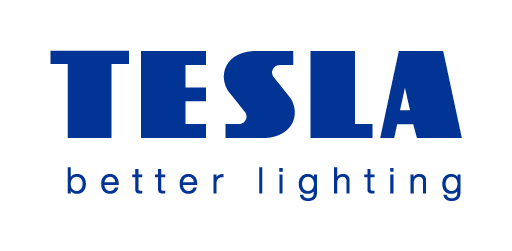TESLAbikář Volume 22 - IP protection (dust and waterproof) of lighting
How to choose the right outdoor lighting: a guide to IP protection
When choosing outdoor lighting, one of the most important parameters is the degree of IP (Ingress Protection). This international standard determines the luminaire's resistance to the ingress of solid particles and water. Let's explain exactly what the different values mean and which rating is most suitable for your needs.
What does IP coverage mean?
The IP code consists of two digits. The first digit (0-6) defines protection against solid particles and dust, while the second digit (0-9) defines water resistance. The higher the number, the better the protection.
First digit - dust protection
- IP1X: Protection against objects larger than 50 mm (e.g. accidental hand contact)
- IP2X: Protection against objects larger than 12.5 mm (protection against fingers or similar objects)
- IP3X: Protection against objects larger than 2.5 mm (tools, wires)
- IP4X: Protection against objects larger than 1 mm (thin wires, most insects)
- IP5X: Partially dust-tight (suitable for dusty environments such as workshops or construction sites)
- IP6X: Completely dust-tight (ideal for extremely dusty environments such as industrial plants)
Second digit - protection against water
- IPX1: Protection against vertical dripping water (as dripping condensate)
- IPX2: Protection against water falling at a 15° angle (e.g. rain in light winds)
- IPX3: Water splash protection up to 60° (wind-driven rain)
- IPX4: Protection against splashing water from all directions (normal rain and spray)
- IPX5: Protection against gushing water (e.g. flow from a garden hose)
- IPX6: Protection against intensive water jetting (strong water jet, washing with a high-pressure cleaner from a safe distance)
- IPX7: Temporary immersion protection (can withstand immersion to a depth of 1 metre for 30 minutes)
- IPX8: Permanent immersion protection (suitable for underwater lights in swimming pools)
- IPX9: Protection against high-pressure water jets (withstands direct washing with high-pressure cleaner)
Which cover to choose for different situations?
Lights on the wall of the house
For normal outdoor lighting prefabricated on the wall of the house is the minimum recommended standard IP44. This cover provides sufficient protection against rain and basic dust tightness. For example, for lighting at the entrance door under the canopy, IP44 will be sufficient. However, if the light is located in an unroofed location with direct and frequent exposure to heavy rain, we recommend choosing IP54 or higher.
Garden and work lighting
For garden lighting and work areas it is advisable to choose minimum protection IP44to ensure reliable protection against dust and water. This level of protection is ideal for lights located close to the ground where there is a risk of splashing when watering, or in dusty environments when mowing grass or doing construction work. For pool or pond lighting, choose IP67 or IP68.
Public lighting
For lighting public areas such as driveways, car parks or sports grounds, it is standard IP65 or IP66 protection. This level of protection is necessary because of the year-round exposure to weather and the need for minimal maintenance. In addition, sports field lighting must be able to withstand possible impacts from balls or other sports equipment, so it is often combined with mechanical protection (e.g. protective grilles).
Conclusion
When choosing outdoor lighting, it is important to consider the specific installation conditions and application. IP44 or IP54 is sufficient for most common house wall installations. For more demanding conditions or specific applications (such as garden lighting or professional work lights), it is advisable to choose a higher degree of protection IP65 and above. Investing in a luminaire with adequate protection pays off in longer life and reliable operation in all weather conditions.

